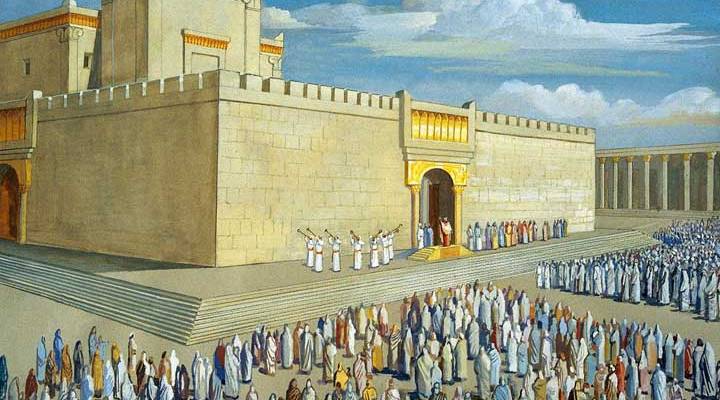
By Rabbi Ari Enkin, rabbinic director, United with Israel
Medieval philosophers Maimonides and Nachmanides, two of the most outstanding Jewish scholars ever, differ on the issue of animal sacrifices and their centrality to Judaism. As Tisha b’Av, the day of mourning for the Holy Temple, nears, it is a relevant topic for discussion.
Korban (or Korbanot in plural) is the word for the ritual offerings and sacrifices offered in the Holy Temple, as commanded in the Torah. Before there was a Temple in Jerusalem, sacrifices were offered in the Tabernacle. Once the First Temple was built by King Solomon, sacrifices were permitted only in the Temple in Jerusalem. With minor exception, it was forbidden to offer sacrifices anywhere else – an edict that continues to this day.
The animal offerings were generally eaten by the one offering them, with some of the meat being given to the priests. The inedible parts were burned up on the altar. In some cases, however, the offering was completely burned on the altar, a token of giving the offering completely to God. The animals eligible to be used as a korban were kosher ones such as bulls, sheep, goats, deer or a dove. The animals were ritually slaughtered before they were put on the altar. There were also a number of possible grain offerings, along with water libations, wine libations and incense offerings.
Here are a number of offerings that were commonly brought:
– The twice-daily communal animal offering
– The childbirth offering
– The thanksgiving offering (for recovery from illness or danger)
– The Passover offering.
– The sin offerings (for both intentional and unintentional transgressions).
– The annual First Fruits offering
– The half-shekel Temple tax
– Other voluntary offerings
The prophets of the Hebrew Bible warned that offerings are not a substitute for serving God in the proper manner, such as by being a good person and observing the Torah. At the same time, the prophets stressed the importance of offerings combined with justice and good deeds. Indeed, offerings were completely unacceptable unless combined with heartfelt repentance and good deeds.
The Talmud devotes a very large section to the study and analysis of offerings. It contains extensive details not only on how to perform the sacrifices, but also how to adjudicate difficult cases, such as what to do if a mistake was made and whether improperly performing one of the required ritual elements in the course of the offering invalidates it. The Talmud explains how to roast the Passover offering, how to sprinkle blood from different kinds of sacrifices upon the altar, how to prepare the incense and many other details.
A Pagan Mentality?
Maimonides was of the opinion that sacrifices were inferior to prayer. But, Maimonides explains, God understood that the Jewish people were used to animal sacrifices from the pagan peoples among whom they had always lived (before leaving Egypt and receiving the Torah). The Jewish people had never been exposed to other ways of serving God. As such, in Maimonides’ view, it was only natural that the Jewish people would feel that sacrifices would play a necessary part in their relationship with God. Maimonides concludes that God’s decision to allow sacrifices was a concession to human psychological limitations. It would have been too much to have expected the Jewish people to go from a sacrificial ritual arrangement to one of prayer.
Nachmanidies, on the other hand, famously disagreed. Nachmanidies cites the fact that the Torah records that animal sacrifices were the practice of the patriarchs of the Jewish people, Abraham, Isaac, and Jacob, and they were certainly not pagan! Nachmanidies reject Maimonides’ opinion, insisting that animal sacrifices are a natural and fundamental form of Jewish worship.
